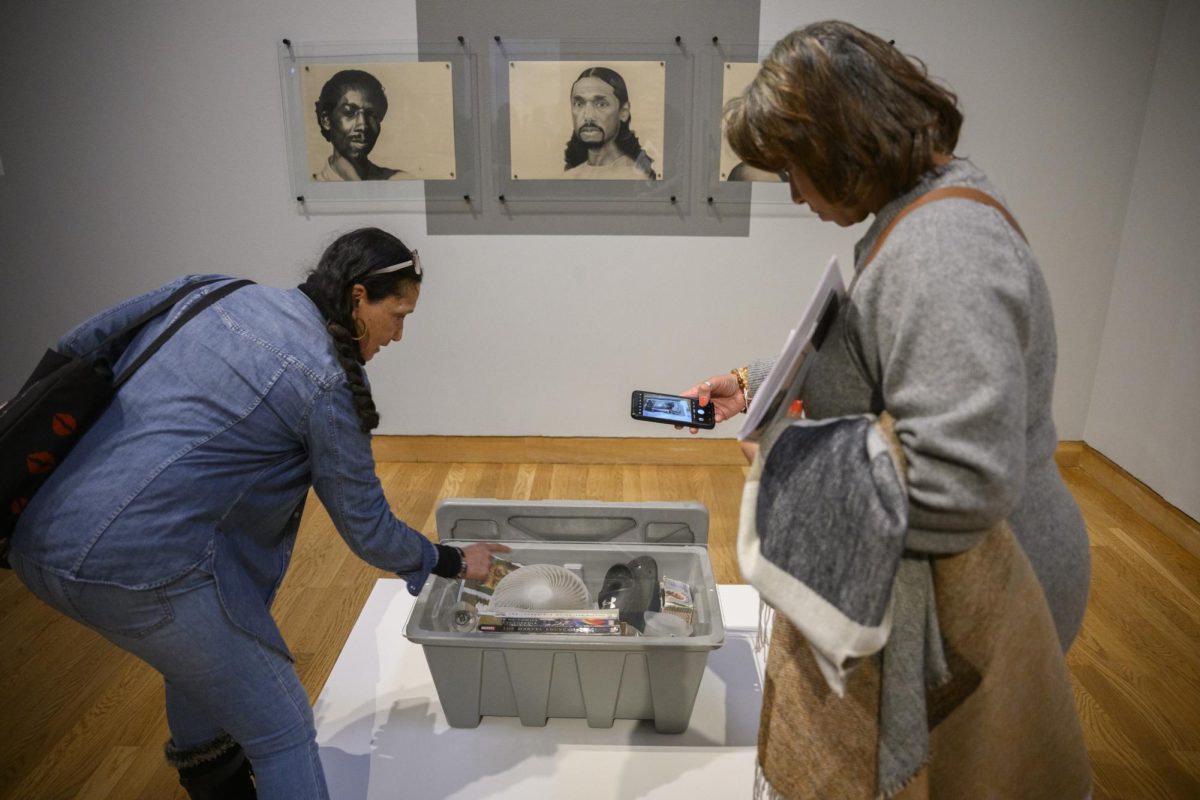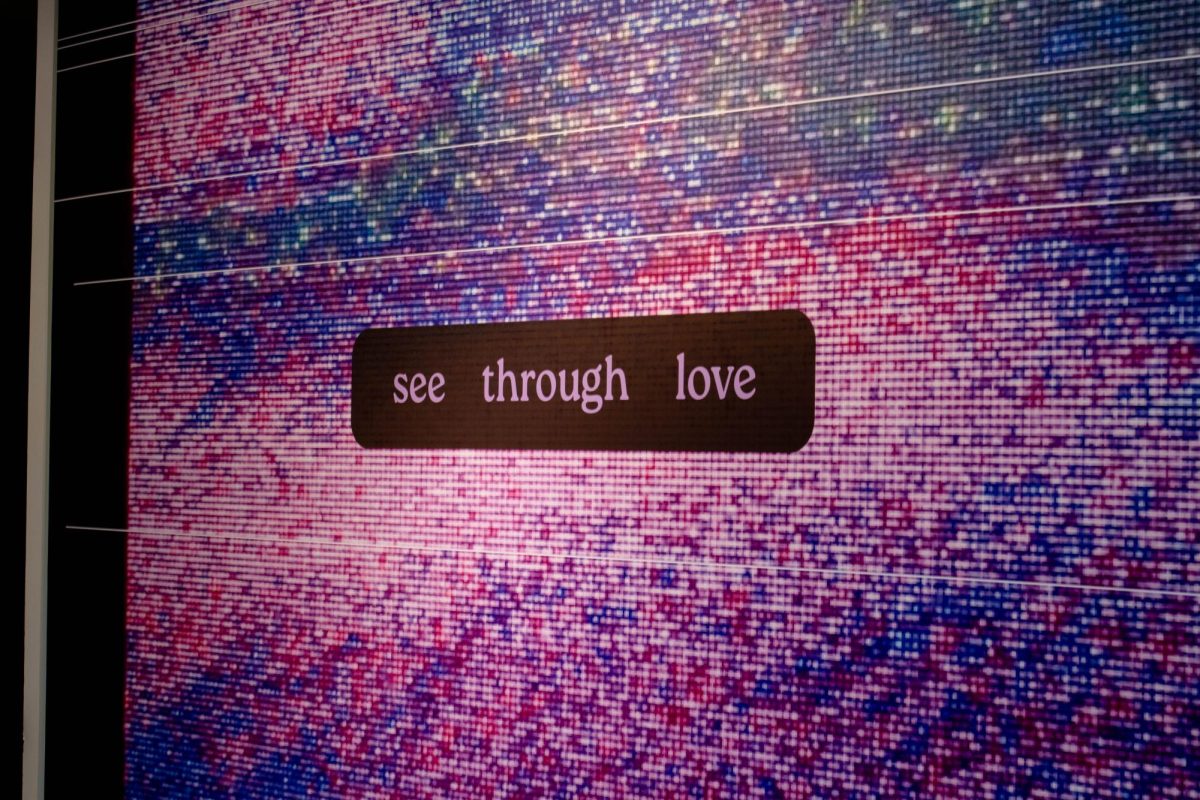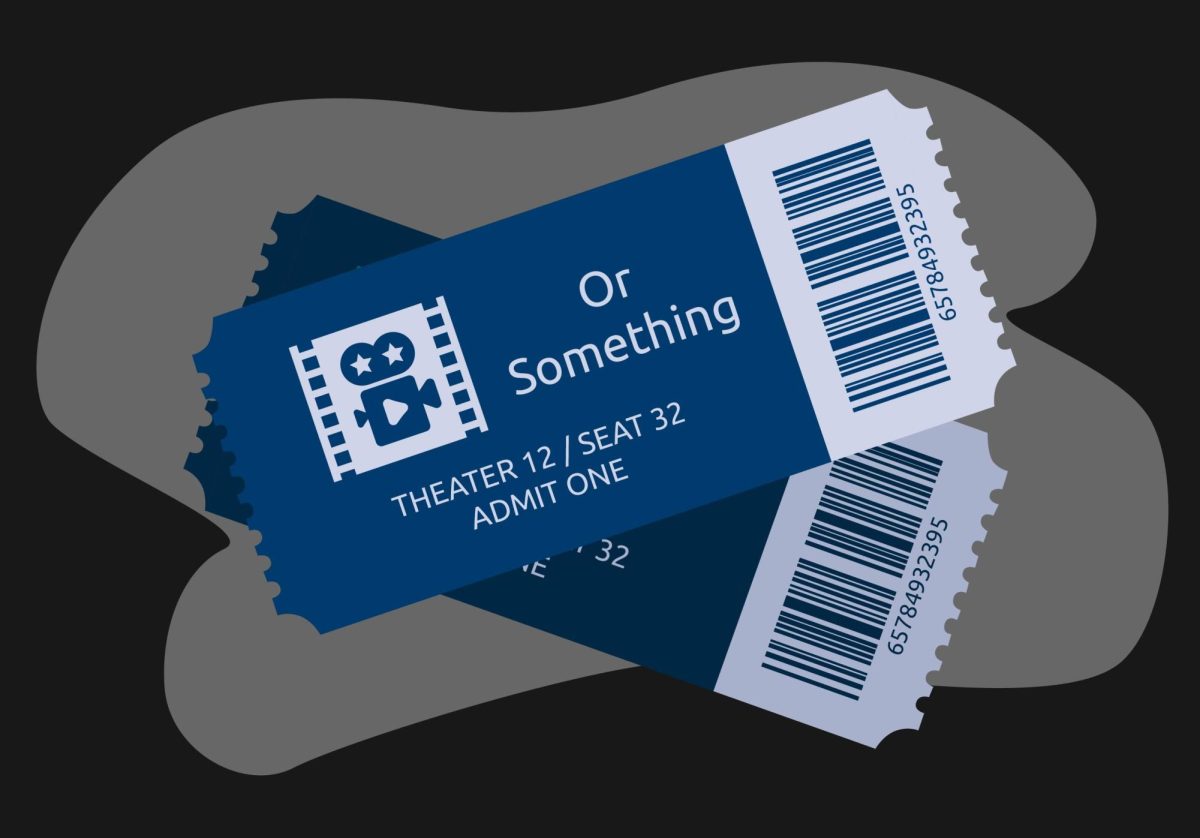The play is set in the 1960s, a time when old values and traditions collided head-on with new fashions and ideas.
A lot of the characters end up colliding, too.
“Black Comedy,” directed by Joel Sass and Luverne Seifert, opens Friday at the Rarig Center.
Written in 1965 by British playwright Peter Shaffer, “Black Comedy” is a dinner party in a London apartment gone horribly, yet hilariously, wrong.
The party’s going fine, just fine, when, alas and alack, the lights go out, and the fun begins. The characters act as if they’re in the dark, but the audience still sees everything, because the stage lights are really still on.
Kelsey Ann Olson portrays Clea, the ex-girlfriend of a character who is now engaged to another woman.
While the idea of an old flame who just can’t let go and shows up at inappropriate times isn’t a new one in theater, the actors had to learn a whole new way of performing in a play in which light is dark and dark is light.
“At the first rehearsal, Joel blindfolded us and put us up on stage to sort through a series of pathways he’d made,” Olson said. “He put rope all over the stage and put furniture over that so we had to make our own paths.”
This method taught the actors how to move in the dark and get those motions into their bodies so they could translate that onto the stage when the lights were on.
Putting a bunch of blindfolded actors on stage with a bunch of furniture, though, is always a risky move. “Of course, really silly things happened,” Olson said. “People got grabbed in the wrong places, we tripped and we fell. We’ve broken every piece of furniture too.”
One blindfolded actor required stitches after he fell and split his lip.
Besides doing their best to keep their bodies intact and injury-free for the duration of the production, the actors had to learn one of four different dialects.
Dramaturge Brian Wene, who also ended up as the voice coach, used compact discs, tapes and a lot of trial and error to get the actors to speak in believable accents.
“No one’s professed to having any formal dialect coaching,” he said, “and we’ve got characters in a standard British accent, a few from the North Country, one with a little hint of Cockney and a couple of characters with German accents.”
The variety of accents and the idea of a “shtick” are classic examples of British farce.
The “shtick” in “Black Comedy” is the lighting, or lack thereof. The lighting stays the same throughout most of the show, which makes it difficult to keep the show going when there aren’t precise scene changes.
Farcical plays are known for impossible plots and exaggerated characters. “These plays are often social commentaries on the times,” Wene said. “That’s one of the catches.”
The characters in farcical plays often deviate from the norm, and the plays usually focus on ridiculous happenings that make people laugh instead of basing the actions around the actors in a sensible, level-headed manner.
First produced in 1965, “Black Comedy,” and its use of the always-entertaining mistaken identities, is based on a Chinese Theatre show, but Shaffer updated it to the hip and happenin’ 1960s.
The characters might be in the dark, but it’s in the dark where their personal secrets are revealed.
” ‘Black Comedy’ is a farce that verges on the slapstick,” Wene started to say before Olson interrupted.
” ‘Verges on the slapstick’?” she said with a grin. “We crossed that line a long time ago.”
“Black Comedy”
When: 8 p.m. Friday and Saturday, 2 p.m. Sunday, 7:30 p.m. Nov. 18, ASL performance at 8 p.m. Nov. 20 and at 2 p.m. Nov. 21
Where: Whiting Proscenium Theater at Rarig Center, 330 21st Ave. S.
Cost: $8-14
Contact: (612) 624-2345







